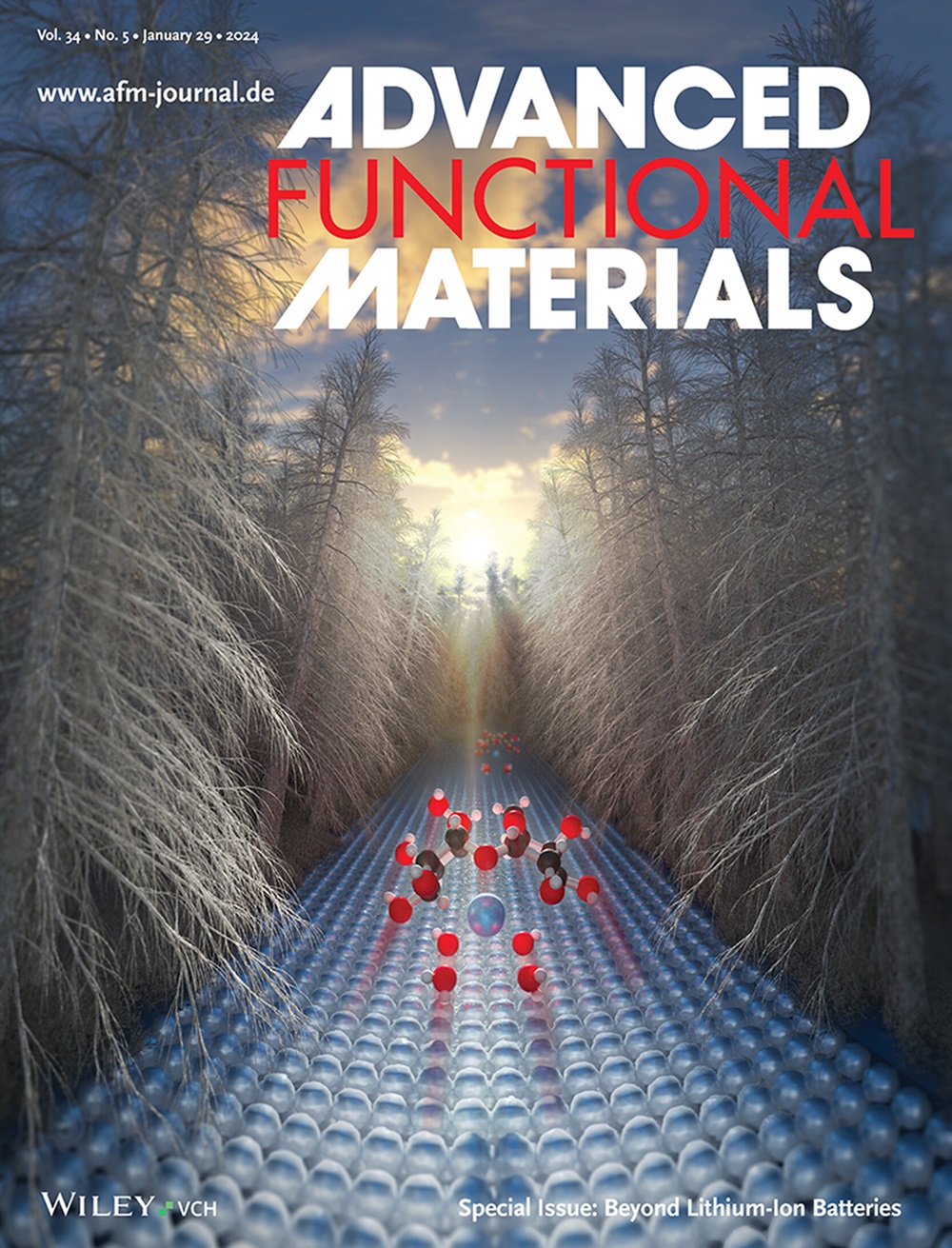Chloride-Mediated Electron Buffering on Ni-Fe Anodes for Ampere-Level Alkaline Seawater Electrolysis
IF 18.5
1区 材料科学
Q1 CHEMISTRY, MULTIDISCIPLINARY
引用次数: 0
Abstract
In water electrolysis, the long-term stability of anodes is compromised by their degradation under oxidative conditions. This issue becomes more pronounced in seawater electrolysis, where the natural chloride ion (Cl−) induces the chlorine evolution reaction (ClER) to produce corrosive byproducts. Herein, a series of small organic molecules (SOMs), featuring an aromatic carbon ring with para-positioned carbonyl groups, are integrated with the conventional nickel-iron (Ni-Fe) based anode. This integration triggers a unique electron buffering effect to address anode degradation in natural seawater-based electrolytes. It is found that preferential adsorption of Cl− onto SOMs prevents its direct interaction with metal active sites. Furthermore, SOM-Cl serving as an electron buffering group significantly reduces the dissolution of Fe sites under the highly oxidative environment. As a result, the SOM-Cl-engineered anode enhances oxygen evolution activity by ≈1.7 times in seawater compared to pure water. In addition, the rationally designed anode works stably for over 200 h at a high current density of 1.3 A cm−2 in an alkaline seawater electrolyzer (ASE).

求助全文
约1分钟内获得全文
求助全文
来源期刊

Advanced Functional Materials
工程技术-材料科学:综合
CiteScore
29.50
自引率
4.20%
发文量
2086
审稿时长
2.1 months
期刊介绍:
Firmly established as a top-tier materials science journal, Advanced Functional Materials reports breakthrough research in all aspects of materials science, including nanotechnology, chemistry, physics, and biology every week.
Advanced Functional Materials is known for its rapid and fair peer review, quality content, and high impact, making it the first choice of the international materials science community.
 求助内容:
求助内容: 应助结果提醒方式:
应助结果提醒方式:


